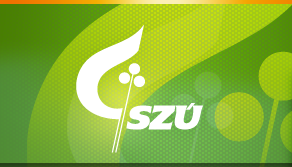Contemporary history (2004 until now)
The entry of the Czech Republic into the European Union in 2004 presented yet another historic landmark in the area of public health where the Institute played an important role. Not only that it helped in implementing EU policies and legal obligations into Czech law but its researchers also contributed to drafting new EU-wide regulations (for example in the area of toy health and safety). Through this process, the Institute proved its prominent position and successfully joined the leading European organisations that provide scientific expertise for the European Centre for Disease Prevention and Control (ECDC). During the Czech Presidency of the EU in 2009, the Institute became the centre for drafting the European legislative norms for public health.
However, not all changes proved to be successful. In 2008, the then director, Dr. Milan Borek, divided the Institute into two sections, the Centre for laboratory activities and the Centre for specialised activities, with the latter producing expert’s opinions and preparing parts of the national public health legislation. Nonetheless, this transformation failed to deliver promised results. The cooperation between the centres lacked any overarching conceptual basis and the project leadership was kept only thanks to the informal collegial ties between the researchers formed in the past. Three years later, the organisational structure was revoked by Ing. Jitka Sosnovcová, the current director of the Institute, who replaced it with the original arrangement
Despite the organisational changes, declining number of staff and decreasing funds, the quality of research activities has remained excellent. The following four examples could serves as evidence
- The number of published articles in journals with an impact factors rose from one in eight in 2004 to one in three submitted articles in 2011.
- The Institute regularly receives government grants as well as funding from the EU for preventative and research activities. For example, projects aimed at modernisation of the system for notification of infectious diseases (NEW EPIDAT), modernisation of the equipment of the National Reference Laboratory for food inspection and 0-3 children product safety
- The Institute successfully handled the global SARS (Severe Acute Respiratory Syndrome) outbreak and the influenza pandemic and managed to act as a trusted source of information and advice for media, public, and the decision-makers
- The number of departments with the status of WHO collaborating centres stayed almost unchanged.
Nowadays the Institute is as a key organisation within the system of public health care in the Czech Republic. With its national reference centres, clinical laboratories and other research departments, the NIPH serves as a unique source of technical and scientific information both for policy-making and disease prevention and control. The NIPH researchers also participate in all layers of higher-education programmes (pre-graduate/graduate/specialised training and life-long learning) and contribute to health promotion via various marketing activities (conferences, publication of materials, etc.). The Institute is also a member of many European and global organisations and participates in a large number of scientific projects.



 cz
cz

